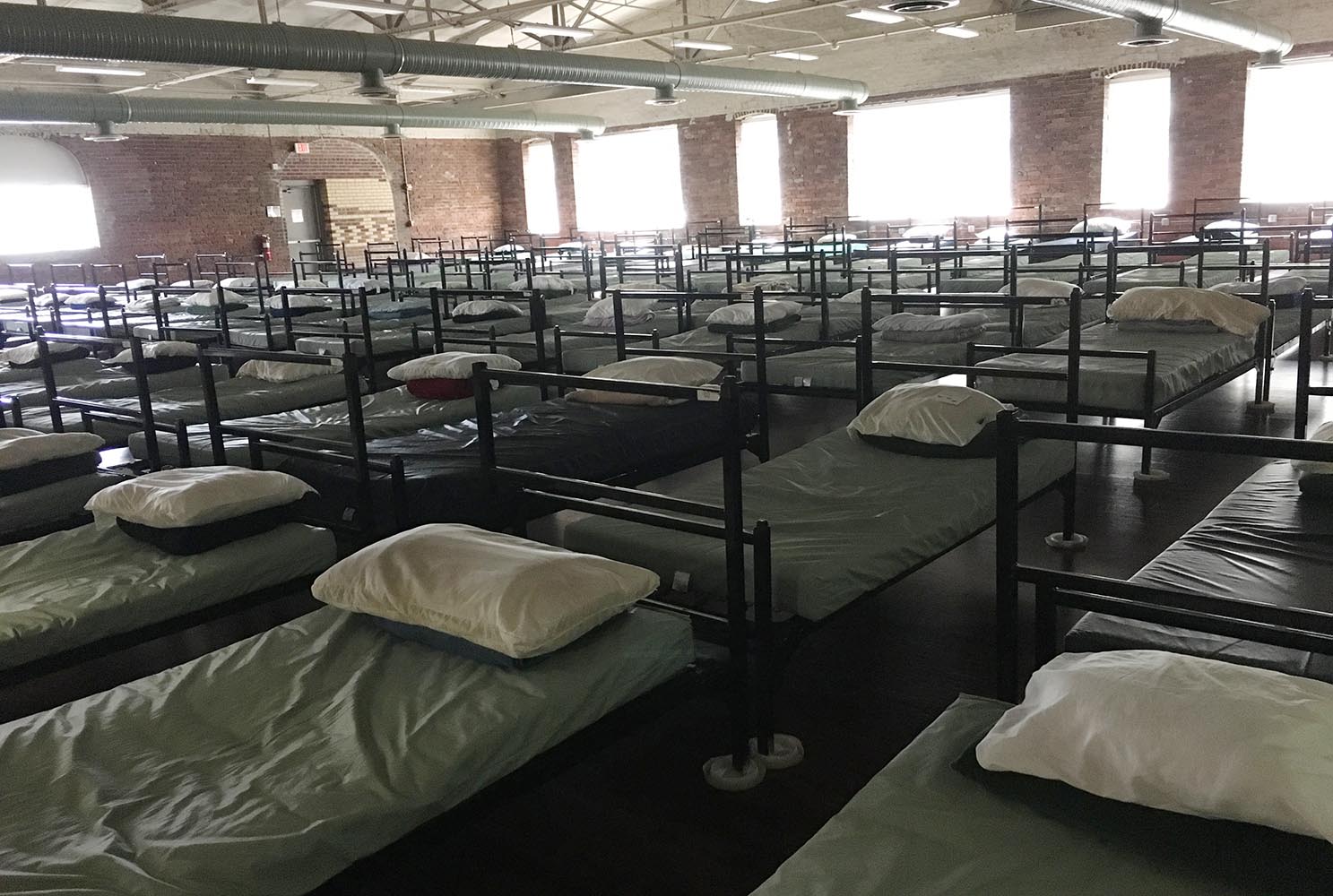St. Louis, Missouri, is advancing a plan to get more shelters built for unhoused people by circumventing potential opposition from other local residents. The proposal is intended to address a chronic lack of shelter and housing in the city, at a time when some people have been camping outside the mayor’s office.
Under the current rule, any provider who wants to open a shelter has to obtain written permission from a majority of locals living within 500 feet of the site. Under the new proposal, supported by Aldermanic President Megan Green (D), a provider wanting to open a shelter would instead need to be authorized by the Board of Public Service, appointed by the Mayor. Residents could still testify against it, but couldn’t veto it on their own. And providers offering very small-scale services, to eight or fewer people, would not need to get any approval.
City lawmakers considered the proposal on September 13, when the planning commission voted 6-0 to advance the proposal to a full vote by the Board of Alders next week.
One longstanding local shelter provider has been unable to open a new facility because of the current requirement, according to reporting by the St. Louis Post-Dispatch. Peter & Paul Community Services, which has worked in the city for 40 years, currently runs a 60-bed men’s shelter in a church basement in the Soulard neighborhood. For two years, it has tried to find a new, bigger location for 100 beds and staff offices. It has received $5.3 million from the state and city pandemic relief funds, and has the green light from the city government. But the requirement to get local residents’ approval has been a constant stumbling block.
“The common belief is that a facility that helps people deemed ‘homeless’ … in a neighborhood will bring increased security problems, crime, violence.”
The organization was forced to cancel a proposal to buy the Saints Mary & Joseph Chapel, after residents complained it would hurt their property values and quality of life. It chose to cancel another option near South Broadway, on the basis that it would have been opposed by many of the same residents. A third location in the Patch neighborhood was canceled by the property owner, which the provider suspects was because the deal dragged on for months as they sought locals’ approval.
“The common belief is that a shelter or facility that helps people deemed ‘homeless’ … in a neighborhood will bring increased security problems, crime, violence,” Anthony D’Agostino, CEO of Peter & Paul Community Services, told Filter. “These aren’t necessarily true but that’s the perception. And [there’s a worry about] land value, property value.”
He supports the proposal and believes it will help providers, but cautions that approving more shelters will still be challenging.
“There’s still going to be a struggle to go through the process and get a shelter or facility up and running,” he said. “If you’re a small organization and you don’t have as many contacts, less funding and resources, it’s going to be more difficult.”
The latest estimate of the unhoused population in the city of St. Louis was 1,252 people. About two thirds were in emergency shelters, one quarter were in temporary housing, and 106 people were unsheltered. The total unhoused population fell in the first year of the pandemic, but has grown each year since and is nearing pre-COVID levels. The unsheltered population decreased during the pandemic but increased slightly this year.
The challenges in St. Louis mirror similar problems in cities nationwide. According to a 2021 survey of mayors in 126 cities with over 75,000 people, more than half cited opposition from local residents and businesses as a barrier to addressing homelessness.
“It’s absolutely a sort of ‘not in my backyard’ phenomenon where people don’t want to see visible visual manifestations of homelessness in their neighborhoods. But they also don’t want to see the policy solution. It’s a really challenging policy area,” commented Katherine Levine Einstein, a Boston University political science professor and co-author of the study, at the time.
NIMBYism is also a sadly familiar problem for harm reduction providers across the United States.
Changing laws could have a big impact on addressing the crisis. But for providers like Peter & Paul Community Services in St. Louis, it’s just the beginning.
Amid a national crisis of homelessness, shelter needs typically exceed available beds, with construction of new shelters and political will both lacking. In New York City, for example, Mayor Eric Adams (D) has proposed limiting a decades-old court ruling that guarantees a “right to shelter” and gives the city one of the lowest unsheltered homelessness rates among major metropolitan areas. Adams cited an increase in unsheltered migrants and asylum seekers for straining the city’s financial resources—but advocates warn that revoking this legal protection will lead to a surge in people living on the streets.
In California, however, state legislators have proposed a new law that would require cities and counties to build sufficient shelter space for their unhoused populations, and penalize those that fail to do so. Los Angles County has only about 30 beds for every 100 unhoused people, while Sacramento County has a similar disparity.
Changing laws at the state and local levels could have a big impact on addressing the crisis. But for providers like Peter & Paul Community Services in St. Louis, it’s just the beginning.
“The major hurdles are you don’t have the history, contacts or resources to get more funding, but also there are many barriers to entry,” D’Agostino said. “There are sometimes up to 50-60 pages of funding application you need to fill out. If you’re a small organization you don’t have the [staff] to fill it out, and you don’t have the knowledge base to do it the proper way. You can spend dozens of hours on an application … then not do it correctly and not get funded.”
Photograph by romanlily via Flickr/Creative Commons 2.0





Show Comments